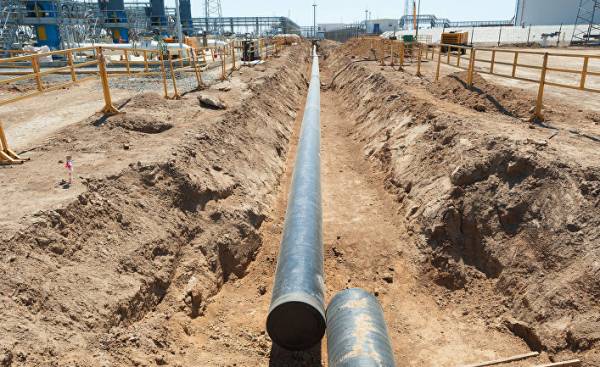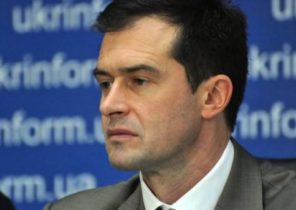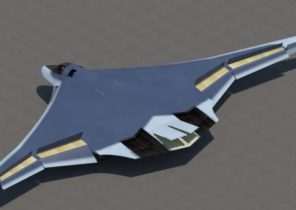
In 1994, when it signed the so-called “contract of the century”, within which was formed the international consortium to develop the giant oil fields “Azeri-Chirag-Guneshli” (ACG), many experts thought that Azerbaijan will not have to worry about money for a very long time.
But only 23 years later, the government of Azerbaijan again confronted with acute financial problems. Azerbaijan still has 7 billion barrels of proven oil reserves, and produces daily and 841 thousand barrels. But this is significantly below the peak of 2010, when production reached 1.1 million barrels per day. The decline in production, coupled with the growing concern regarding the depletion of reserves and the fall in world oil prices has forced Azerbaijan to look for alternative sources of income.
The main hope is to increase production on enormous deposits of natural gas.
According to conservative estimates, Azerbaijan has reserves of 1.3 trillion cubic meters of gas and condensate, for the most part on the offshore field “Shah Deniz”, which is one of the largest in the world.
Production at this field started in 2006 and is expected to increase significantly with the launch of the second phase of its development in 2018. Azerbaijan plans to supply gas via Turkey, Greece and Albania to Italy and rest of Europe via the planned TRANS-Anatolian (TANAP) and TRANS Adriatic (TAP) pipelines, which form the so-called “southern gas corridor”.
It is planned that gas supplies will start in 2018, when the first 4 billion cubic meters will be delivered to Georgia and Turkey. A year later, the supply volume should be increased to 12 billion cubic meters, and in 2020 — up to 16 billion cubic meters, of which 10 billion will go to Europe.
But even increasing exports by increasing production on “Shah-Deniz” is not enough to fully provide for the financial stability of the country. Azerbaijan’s hopes to become a gas superpower, associated with the exploration and production of gas offshore.
Most important for the evaluation of Azerbaijan becoming an energy superpower is the field “Absheron”, explored in 2011. With the beginning of exploitation of stocks of this giant, the components 350 billion cubic meters of gas and 45 million tons of condensate that can fill extending to Europe the thread of gas pipelines “southern corridor”. This will further increase deliveries to the EU and, coupled with a significant increase in supplies from the giant field “Shah Deniz” to calm the concerns of the EU about energy security. In General, according to the documents GKAR, it will allow to increase gas exports to 40 billion cubic meters per year.
In addition, one of the latest discoveries, announced in 2010, is a gas field Umid in the southern part of the Caspian sea, whose reserves are estimated at 200 billion cubic meters of gas and 40 million tons of condensate. State-owned energy company of the country “GKAR” began production in this field in 2012, and recently completed the drilling of the third well.
Also very promising is the neighboring field, “Babak”, production on which has not started yet. Potential reserves are estimated at 400 billion cubic meters of gas and 80 million tons of condensate.
Located off the coast field “Shafag-Asiman” can give another 300 billion cubic meters of gas that Azerbaijan plans to extract in the framework of the contract on production sharing with BP. (Seismic data, this field may also contain oil).
Also in conjunction with a foreign company — the German RWE — developed offshore field “Nakhichevan”.
However, the problem lies in the fact that the revenues of Azerbaijan from gas exports, of course, will increase significantly, but this will only happen in a few years, in the meantime, Baku will have to overcome a number of difficulties.
Production at the field “Absheron” will begin in late 2021 or early 2022, and the first deliveries of gas from “Shah-Deniz-2” will reach Europe in 2020, or even later.
Meanwhile, Azerbaijan is itself faced with a shortage of gas. To meet the domestic needs of the country needs 12 billion cubic meters of “blue fuel”. In 2016, the Republic was forced to import about one-tenth of its needs from abroad. In the first five months of the current year gas production “GKAR” actually decreased by 5.4% compared to the same period in 2015. It was forced to begin negotiations with “Gazprom” about possibility of deliveries from Russia in volumes 3-5, milliardo cubic meters per year. It is reported that Baku has asked Moscow to offer.
All this, combined with low oil prices, creates acute financial problems. Azerbaijan has already had to borrow from international financial institutions about $ 5 billion to Finance its share in construction of the “South corridor”. Baku was also forced to place Eurobonds worth $ 1 billion (and is preparing to accommodate). In addition, the Republic has received from the world Bank loan of $ 400 million.
And to cover 20% of the cost of the “TRANS Adriatic pipeline” — the share of Azerbaijan in this project is the Baku is negotiating with the European Bank for reconstruction and development on the provision of direct financing in the amount of about $ 550 million and attracting another $ 1.1 billion from commercial banks.
High costs Azerbaijan kompensiruet decline in global steel prices, which is necessary for the construction of pipelines. Baku thus has saved $ 2 billion just for TANAP. But due to financial problems of Azerbaijan cannot do all projects in the energy sector, and is forced to prioritize. For this reason, most of the funds will be allocated to launch the second phase of field “Shah Deniz” and the construction of the “southern gas corridor”, while the implementation of other projects without foreign partners, including the development of gas fields Umid and “Babak”, can be slow. Baku, however, probably also will be engaged in the field “Absheron”, because its development involved the French energy giant Total.
This tangle of problems could soon start to have a serious impact on domestic policy of Azerbaijan. The state national wealth Fund SOFAZ is quickly exhausted. In 2016, his stock has fallen to a modest 64 million dollars, while in 2015 the “piggy Bank” was 323 million dollars, and in 2014 — $ 523 million. This trend is likely to continue, because Azerbaijan is not going to abandon their ambitions to enter the leading positions in the export of gas. In this regard, financial problems, Baku will begin to experience acute and ordinary citizens. But Baku hopes that by the time when people “come to grips”, will flow from Europe Hastelloy river.







